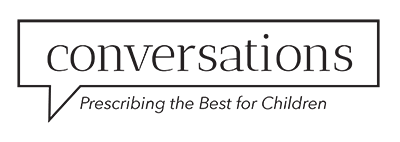Confidentiality
Pediatricians who practice in states that require adolescent confidentiality can still encourage parent-adolescent communication. An alternative/expanded confidentiality statement is provided in section VI below.
BACKGROUND
Throughout history, adolescents have been viewed as part of their family in all arenas of life, including school and health care. Parents were considered responsible for their children and were expected to make all decisions until the child became an adult according to the state’s law. The issue of “confidential care” for adolescents was never the expectation of any family member until the 1970s. Confidential care only became necessary once adolescents were provided with birth control, abortion counseling, treatment for sexually transmitted infections, and counseling about drug use without parental consent or knowledge of the concern being an issue for their child.
PROMOTING STRONG, STABLE FAMILIES
- The family is the mainstay of society and should be supported whenever possible. Parent-adolescent communication is crucial, and physicians should facilitate communication rather than create barriers.
- Adolescents are viewed as minors who most often benefit from parental involvement. Parental authorization is required for many activities, including most health care services, as society regards this as providing protection for the adolescent.
SCIENTIFIC RESEARCH
Two aspects of scientific research must be considered when approaching parent-adolescent communication.
1.The immaturity of the adolescent brain:
- Every lobe/aspect of the adolescent brain that has been researched demonstrates an immaturity both functionally via imaging as well as practically. (1)
- This immaturity makes parental influence mandatory as the adolescent navigates the difficult teen years.
- Adolescents are less likely to participate in high risk behaviors when parents are more involved in their children’s lives and monitor their activities. (2)
2. The National Longitudinal Study on Adolescent Health
- This large, longitudinal study of more than 40,000 adolescents has provided rich data regarding factors that help teens make healthy choices.
- In one of the first reports, Dr. Resnick and colleagues found “Parent-family connectedness and perceived school connectedness were protective against every health risk behavior measure except history of pregnancy.” In other words, those teens who were most connected to their families were much less likely to participate in high-risk behaviors. (3)
This research alone should be enough to require that pediatricians encourage uncompromising parent-adolescent communication.
Implications of Confidentiality
The physician is placed in the untenable position of trying to have a trusting relationship with the family, while being unable to discuss important health-related concerns.
The adolescent views the physician as complicit with him or her in deceiving the parents.
“What are we teaching our adolescents when they find persons in authority willing to help them deceive their parents? What does it teach these adolescents with regard to the respect owed to any adult, least of all a deceitful doctor or a duped parent?” (4)
THE CONVERSATION
This conversation usually occurs at a regular well-visit.
This conversation should include the pre-teen patient and the patients parents/guardians.
In order to avoid some of the negative aspects of the confidentiality talk, consider the following:
- Always have this conversation with an early teen while the parents/guardians are in the room.
- Discuss the definition of confidentiality: “I have to keep this a secret. If you ask me to keep it confidential, it means I cannot tell this information to anyone else, including your parents.”
- Discuss what cannot be kept confidential:
- If the teen plans to hurt herself or himself
- If the teen plans to hurt another individual
- If someone is hurting the teen
While most pediatricians might end the conversation here, you should address the teen by saying:
“The person who loves you the most is sitting here with you today. Your parent/guardian has changed your diaper and held your hand as you crossed the street” or something similar to lighten the mood and make the teen laugh.
“Your parent(s) will always be there for you. As a pediatrician, I cannot be there for you 24/7. I cannot help you if you get a traffic ticket, etc., but your parents will be there for you.”
“So, if you ask me to keep something confidential, I will do so as that is the law, but I will encourage you to tell your parents. If you need help talking with your parents, I will be glad to be there with you.” This provides the teen with support and help if it is needed.

This conversation demonstrates to the parent and teen that the pediatrician wants to enhance and encourage their communication rather than set up barriers.
REFERENCES
- Giedd JN. Structural magnetic resonance imaging of the adolescent brain. Annals N.Y. Acad Sci. 2004;1021:77-85.
- National Center on Addiction and Substance Abuse at Columbia University. “CASA 2000 Teen Survey: Teens with ‘Hands off’ Parents at four times greater risk of smoking, drinking and using illegal drugs as teens with ‘hands on’ parents” casacolumbia.org/absolutenm/?a=111
- Resnick MD, Bearman PS, Blum RW, et al. Protecting adolescents from harm: findings from the national longitudinal study on adolescent health. JAMA. 1997:278(10):823-832.
- Ross LF. Health care decision-making by children: is it in their best interest? Hastings Cent Rep. 1997;27(6):41-45.
RESOURCES
- American College of Pediatricians Position Statement, The Roles, Responsibilities and Rights of Parents, https://www.acpeds.org/the-college-speaks/position-statements/parenting-issues/the-roles-responsibilities-and-rights-of-parents.
